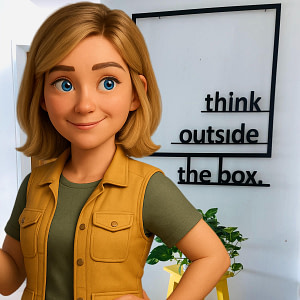How a Lazy River and a Wedding Gig Launched My Career
Years ago, I worked at a small-town Chamber of Commerce nestled in a quiet farming valley. A lazy river meandered through town, and right in the center, a concrete parking lot jutted out over the water about 20 yards. The locals called it *the revetment*.
One day, a Chamber member had a wild idea: build a boardwalk along the edge of that lot and connect it to a nearby walking trail. He imagined families strolling downtown on warm summer nights, drawn in by the soft glow of storefronts and the calm of the river below.
It was a beautiful vision. But visions don’t fund themselves.
We took the project on and started looking for sponsors. It was like pulling teeth. Most folks couldn’t see what he saw.
Eventually, we began selling individual boards—each one with a brass plaque engraved with the donor’s name. Slowly, the money trickled in. Pallets of lumber arrived. A few dedicated volunteers started showing up after hours, building the boardwalk one evening at a time.
The project wasn’t dead in the water… but it wasn’t exactly cruising either. I decided to do something about it.
 The Two-Minute Fix
The Two-Minute Fix
I had no editing equipment. No time. No budget.
But I knew how to tell a story.
So I dusted off a strategy I’d used before — **editing in the camera**. That meant capturing each clip in sequence, with no post-production needed. I planned to create a short promotional video we could play at the next Chamber meeting. If I could help people *see* the vision, maybe they’d get behind it.
That Saturday, volunteers were already hard at work by 8 a.m. I showed up with my Sony TR101, watched the rhythm of the morning unfold, and mapped the sequence out in my head:
No mistakes allowed. Just frame, record, count the beats in my head, stop, move, repeat. After two hours, I had a clean, two-minute video locked in the camera. All I needed was a quick title card at the beginning and a call-to-action at the end.
Sometime that morning, the Chamber director asked what I was up to.
“I’m making us a video that'll help us sell more boards,” I said.
He lit up.
 The Big Debut
The Big Debut
Wednesday morning. Chamber meeting. 250 people in the room.
We wheeled in the TV cart. (Yep, *that* kind of TV cart.)
I popped in the tape.
Hit play.
Then cranked up a nearby ghetto blaster blasting Maynard Ferguson’s *Gonna Fly Now* from *Rocky*.
It hit like a freight train.
The crowd loved it. People signed up. Donations rolled in. The energy was back. And just as I was catching my breath, the superintendent of the local school district tapped me on the shoulder.
“We’re putting together a school bond vote. Think you could help us make a video?”
And just like that — a video production business was born.
 Flying Without a Net
Flying Without a Net
A few days later, the phone rang.
A man who had attended the Chamber meeting tracked me down.
“You shot that boardwalk video?”
“Yes, sir.”
“Think you could film my daughter’s wedding?”
“Absolutely.”
*(Holy sh*t.)*
The wedding was the following weekend at the Washington State Ferry Terminal in Bellingham, WA. Hundreds of guests. Ice sculptures. Cocktail hour. Ceremony. Speeches. Dinner. Live music. Afterparty.
And I shot the entire thing *with no post-production.*
Just like the boardwalk video, I edited it live in the camera — every shot had to land, in sequence, with zero safety net.
One slip and the whole thing could fall apart.
But I nailed it.
That wedding turned into referrals.
Referrals turned into clients.
Clients turned into campaigns.
I didn’t have business cards. I didn’t have fancy gear.
What I *did* have was trust — and proof that I could deliver.
And that was enough.
 Ren’s Take
Ren’s Take
Ren would say this wasn’t about luck.
It was about being **resourceful in the moment** — working with what’s in front of you, trusting your instincts, and knowing the story matters more than the tools.
This wasn’t just a scrappy beginning.
It was the moment I realized:
You don’t need a full production suite to tell a story that moves people.
You just need to start recording.

 The Two-Minute Fix
The Two-Minute Fix The Big Debut
The Big Debut Flying Without a Net
Flying Without a Net Ren’s Take
Ren’s Take